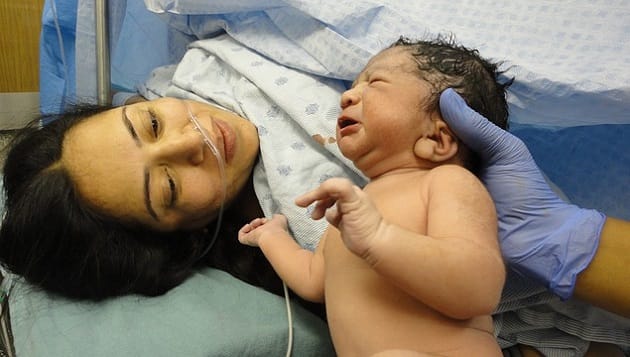Are you thinking of doing an In Vitro Fertilization treatment? This is becoming a very popular option for couples who have been trying to conceive without success. In this article, you can find out what is In Vitro fertilization (IVF) and get to know more about the process.
In vitro term is actually Latin and it means inside the glass. Unlike today, glass was used to make all of the laboratory apparatus in the past.
In Vitro Fertilization is a method that involves an egg being fertilized by a sperm, in a laboratory dish, outside of the body and implanted inside the uterus. This treatment is a type of Assisted Reproductive Technology, an option that many couples choose when pregnancy fails because of infertility problem.
During the IVF process, hormones are administered to control ovulation and the ovum is then removed from the ovaries for external fertilization with the sperm from the male. This technique was developed by Dr Robert G. Edwards and the babies which are conceived with its help were popularly referred to as test tube babies.
Let’s take a look the procedure and associated risks.
The In Vitro fertilization Procedure
When you decide to do IVF, you have to visit your doctor for the initial tests. The screening tests will be performed on you and your partner. Women have to undergo an ovarian reserve test before they are given any medication. A third-day FSH testing will be done where the follicle stimulating hormone baseline is checked on day three of the menstrual cycle. If the test shows an elevated baseline, which is a change from the regular FSH levels, this indicates that the ovarian reserve has a reduction, meaning the number of eggs. Once this is determined, the doctor will know if the woman is going to respond well to the administered drugs which are given to stimulate egg production. The amount of eggs which are collected on stimulation will determine the success rate of the IVF process.
Here is a step-by-step explanation of the process:
The stimulation: Fertility drugs will be given to the woman. These drugs are intended to stimulate the ovary to produce more eggs than the standard one that comes monthly.
Egg retrieval: For this, a small surgical procedure, follicular aspiration, will be done. During this process, the doctor will do an ultrasound and insert a needle into the vagina to get to the follicles inside the ovaries with the eggs. This needle is attached to a suction apparatus that helps in removing the eggs with some fluid. The process will be done for both ovaries and it’s relatively painless.
Fertilization and insemination: After the eggs are retrieved, they are stored before fertilization in controlled temperatures. The eggs with the best quality are then combined with the sperm from the male partner in a process called artificial insemination. The fertilization will take place when the sperm go in the egg after a few hours. If fertilization chances are very low, the doctors will inject the sperm directly into the egg in a process called intracytoplasmic sperm injection.
Embryo culturing: For an embryo to form, the fertilized egg will undergo different stages of division. These division stages are monitored carefully by the doctors or laboratory technicians in order to ensure that the embryo is developed successful. The embryo must be kept in very rigid temperature parameters as well as sterility to prevent any form of contamination. In addition, the embryo is screened at this stage for genetic disorders as it’s important to know if the baby will be healthy before implantation.
Embryo transfer or implantation: After fertilization, in about 3 to 5 days, the embryo will be implanted in the womb. In this step, the doctor will insert a thin tube or the catheter in the cervix to get to the womb. This catheter will have the embryos. The success rate will depend on the embryo penetrating to the womb. At times, if more than just one embryo is implanted the pregnancy will result in twin or triplet.
Risks Associated with In Vitro fertilization
There are certain risk factors associated with this procedure and you should consider them beforehand.
You can experience side effects from the fertility medication that is given to stimulate your ovaries. The symptoms can include headaches, bloating and mood swings.
Multiple pregnancies could result and this might be a risk factor because the likelihood of premature birth is usually higher in such cases.
In rare cases, some women develop a condition called ovarian hyperstimulation syndrome. This will happens if fluid accumulates in your chest and abdomen. You could experience shortness of breath as well as abdominal pain, excessive body weight, decreased urination within a short time period. In severe cases, a needle will be inserted to drain the fluid.
After reading this article, you should have a better understanding about what is In Vitro fertilization (IVF). Talk to your doctor to know if it’s the right treatment for you.



